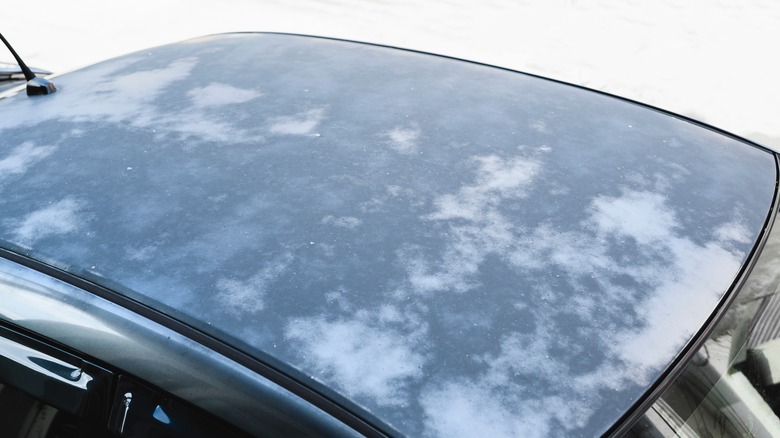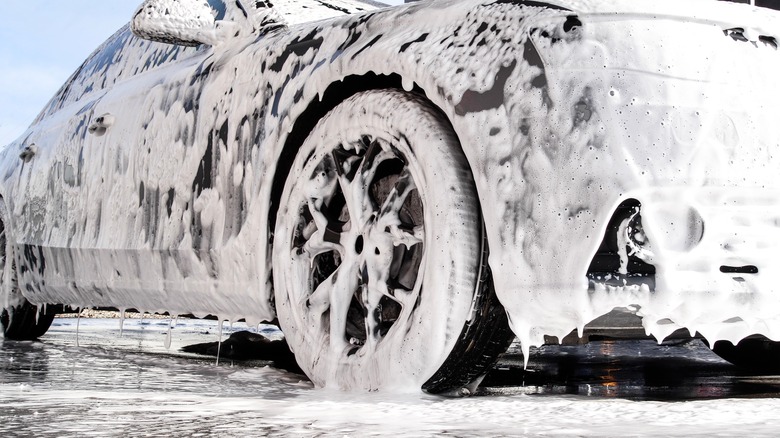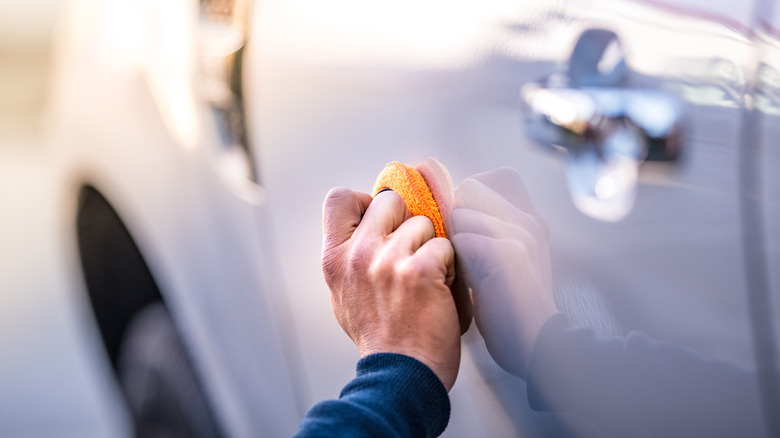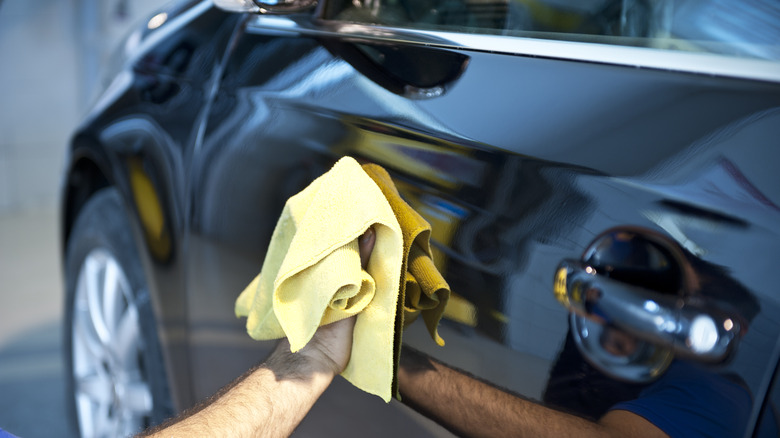3 Tips & Tricks To Detail Faded Paint By Hand
Using a machine makes it faster and easier, but it's possible to detail faded paint by hand. However, you must carefully assess your approach to achieve the best results. Sometimes, you might need to go beyond paint correction for panels with rust or significantly faded paint or ones that go beyond the primer and metal surface underneath.
Adding flavor to the pot is the type of paint. Carmakers like Volkswagen, BMW, and Audi typically use harder paints, which are easier to work on. Meanwhile, Porsche, Lexus, and Honda use softer paints, which require more attention when buffing or polishing due to the risk of "burning" through the clear coat.
Nevertheless, detailing faded paint by hand is possible whether your car has soft or hard paint – it depends on choosing the right tools and techniques. All you need is a few hours on a quiet, fair-weathered weekend, and keep in mind the tips and tricks below to restore faded paint to its former shiny glory.
Wash the entire car before doing anything
Cleaning the vehicle with copious amounts of water and car wash soap is the primary step before compounding, polishing, or sanding the paint. It doesn't matter whether you're dealing with an old or newer vehicle. Washing the surface helps reveal the condition of the paint, giving you time to assess the condition of the surface.
Some body panels like the roof, trunk, or hood might require more compounding, while the upper or lower part of the doors are prone to fading or mild damage due to constant UV exposure. Before dealing with faded paint surfaces, rinse the car with water, clean all surfaces with soap, give it a final rinse, and wipe dry with a microfiber towel.
Removing all surface dirt will make the compounding or polishing easier than when the surface has dust, dirt, and other contaminants. While at it, resist the urge to use dish soap when washing any vehicle, and never wipe dry, dirty paint with a dry towel to prevent more damage.
Choose the right products
Mildly faded, scratched, or dull paint surfaces could easily be corrected using a professional-quality compound and a pure polish that doesn't contain any wax. Many products are available online and at your favorite auto stores, but a few stand out based on this author's know-how in cleaning and detailing cars.
Products like Meguiar's Ultimate Compound and Meguiar's Ultimate Polish are top-rated for hand or machine applications. Meguiar's Ultimate Compound is safe for clear coat paint and contains advanced micro-abrasives to remove blemishes, oxidation, scratches, faded surfaces, and water spots without scratching.
Meanwhile, Meguiar's Ultimate Polish has fine abrasives to eliminate swirl marks after compounding. It also contains conditioning oils to restore the paint's color and glossy shine. The trick to applying compound or polish is to remove the product residue immediately and not let it dry on the paint. Use an applicator pad to rub the surface gently with the compound or polish before removing the excess with a microfiber towel.
When to wax and when not to
After compounding and polishing, it's necessary to apply wax to seal the finish and protect it from rain or sun exposure. Any car wax will do, but we like using Meguiar's Gold Class Liquid Wax for its carnauba-polymer formula that delivers an intensely reflective, brilliant shine that lasts.
Unlike compound or polish, wax must dry on the surface to deliver the best results. Pour a few drops of wax on a foam applicator pad, apply over the paint, and dry for five to ten minutes before buffing off the excess using a microfiber towel.
However, do not apply wax to freshly painted surfaces. If you had to sand, prime, and paint to restore the faded surface, do not apply wax after polishing. Doing so will prevent the paint solvents from gassing, curing, or achieving the desired hardness.
It's better to wait 60 or more days for a freshly painted surface to fully cure before applying a protective layer of wax. On the other hand, it's okay to compound and polish a newly painted surface to remove orange peel and bring out the glossy shine.



